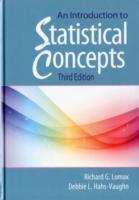Full Description
This book explores unusual patterns of agreement, one of the most intriguing and theoretically challenging aspects of human language. Agreement is typically thought to reflect a structural relationship between a verb and its arguments within the clause, and all major theories of agreement have been developed with the centrality of this relationship in mind. But beyond the verb, items belonging to practically every other part of speech have been found to function as agreement targets, including adpositions, adverbs, converbs, nouns, pronouns, complementizers, and other conjunctions. Data on these targets provide rich insights into the structural domains in which agreement operates, demonstrating that unusual targets can be associated with unexpected domains that are independent of the agreement domain of the verb.
Following an introduction to the typology of unusual targets and unexpected domains across the world's languages, the chapters in this volume provide detailed treatments of a wide range of rare and complex agreement phenomena in seven languages, belonging to five different language families of Eurasia and the Pacific. The contributions are all based on novel data collected by the authors, which detail the syntactic, semantic, and pragmatic properties of agreement on non-verbal targets within the clause.
Contents
Preface
1: Oliver Bond, Marina Chumakina, and Steven Kaye: Unusual agreement targets in unexpected domains
2: Steven Kaye: Agreement between arguments in Andi
3: Nina Sumbatova: Agreement of essive adverbials in Tanti Dargwa
4: Marina Chumakina: Agreeing adverbs in Enets
5: Tania Paciaroni: Unusual agreement targets in Ripano
6: Marina Chumakina and Ekaterina Lyutikova: External agreement in Khwarshi
7: Bruno Olsson: Agreeing postpositions and unexpected agreement in Coastal Marind
8: Alexander Rostovtsev-Popiel: Case-shift on Megrelian adverbs
References
Index








